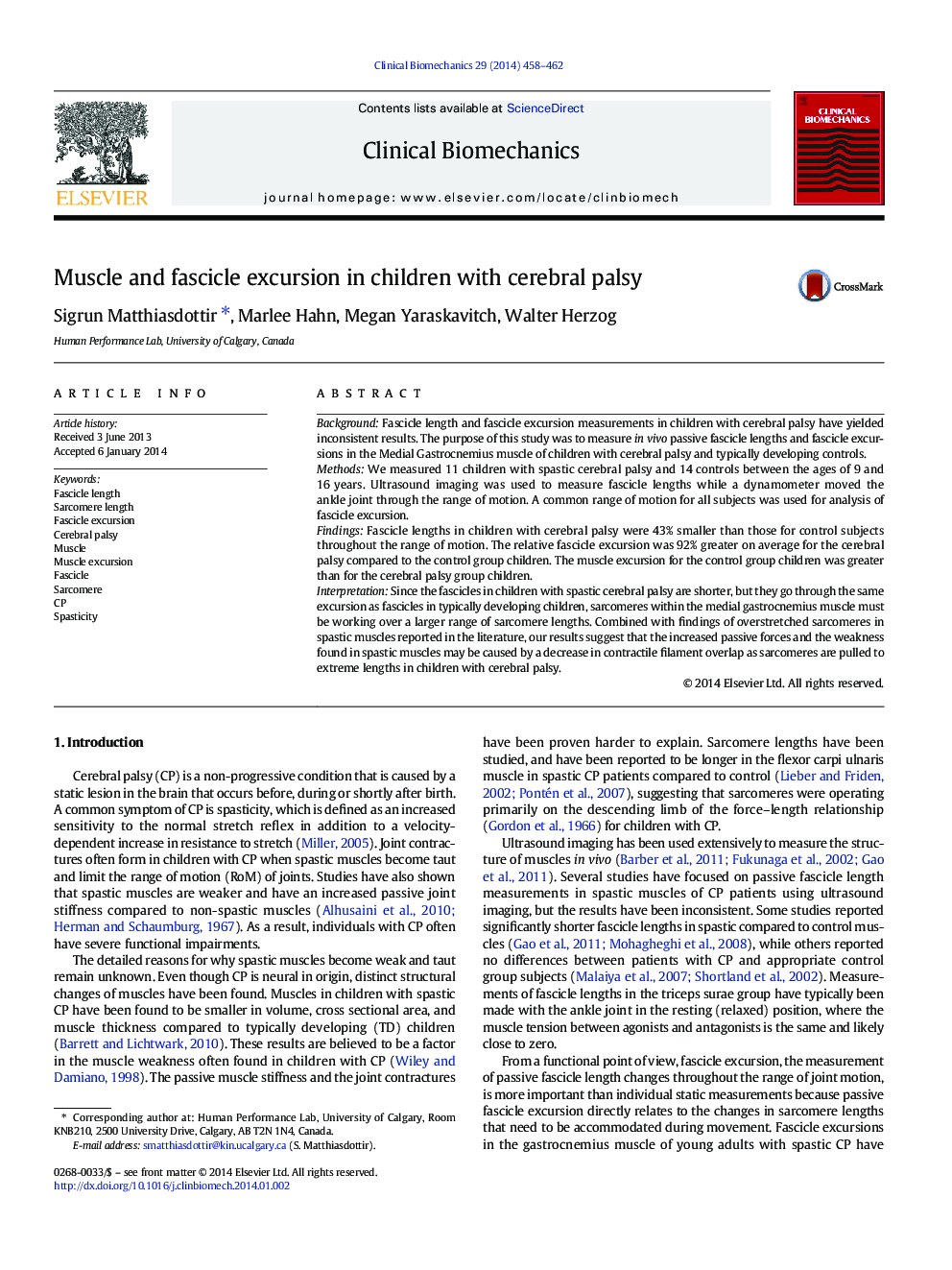| Article ID | Journal | Published Year | Pages | File Type |
|---|---|---|---|---|
| 6204866 | Clinical Biomechanics | 2014 | 5 Pages |
BackgroundFascicle length and fascicle excursion measurements in children with cerebral palsy have yielded inconsistent results. The purpose of this study was to measure in vivo passive fascicle lengths and fascicle excursions in the Medial Gastrocnemius muscle of children with cerebral palsy and typically developing controls.MethodsWe measured 11 children with spastic cerebral palsy and 14 controls between the ages of 9 and 16Â years. Ultrasound imaging was used to measure fascicle lengths while a dynamometer moved the ankle joint through the range of motion. A common range of motion for all subjects was used for analysis of fascicle excursion.FindingsFascicle lengths in children with cerebral palsy were 43% smaller than those for control subjects throughout the range of motion. The relative fascicle excursion was 92% greater on average for the cerebral palsy compared to the control group children. The muscle excursion for the control group children was greater than for the cerebral palsy group children.InterpretationSince the fascicles in children with spastic cerebral palsy are shorter, but they go through the same excursion as fascicles in typically developing children, sarcomeres within the medial gastrocnemius muscle must be working over a larger range of sarcomere lengths. Combined with findings of overstretched sarcomeres in spastic muscles reported in the literature, our results suggest that the increased passive forces and the weakness found in spastic muscles may be caused by a decrease in contractile filament overlap as sarcomeres are pulled to extreme lengths in children with cerebral palsy.
